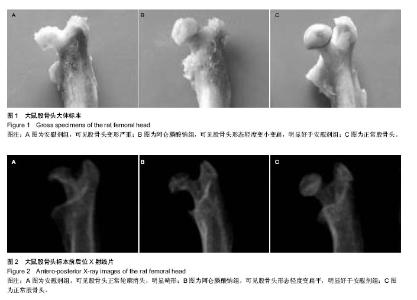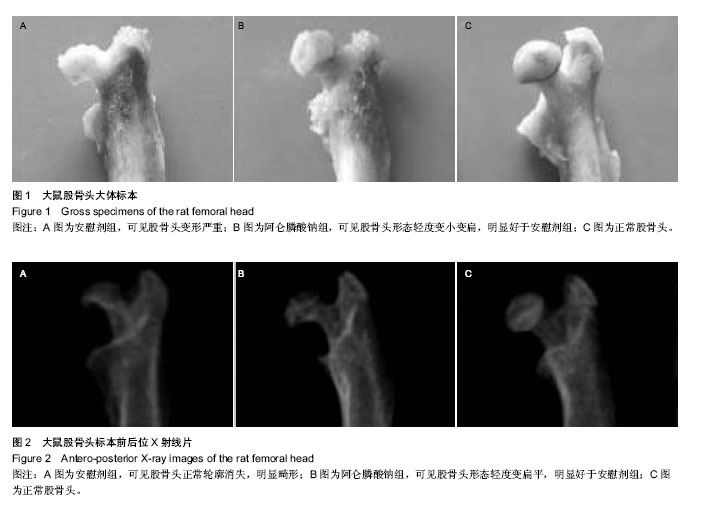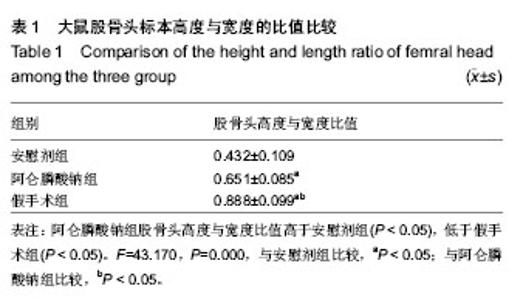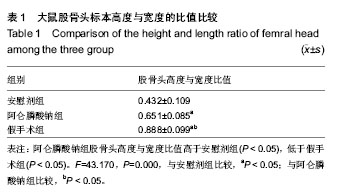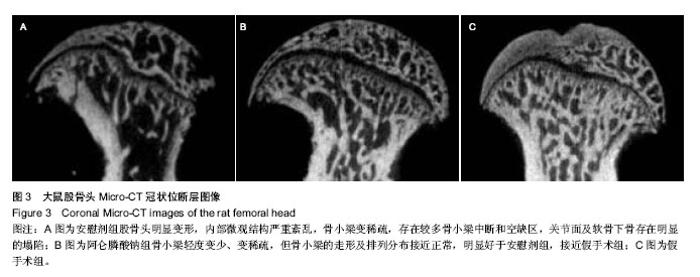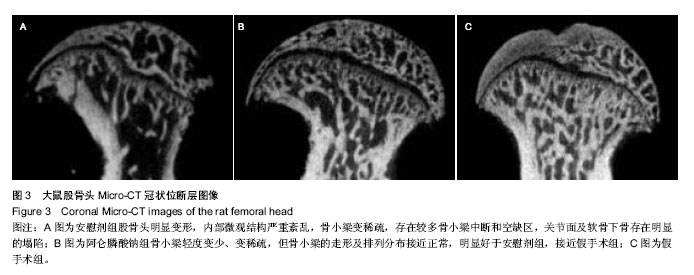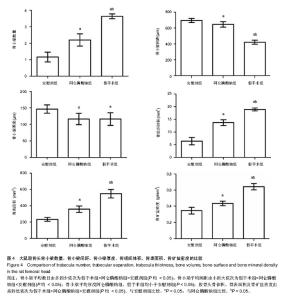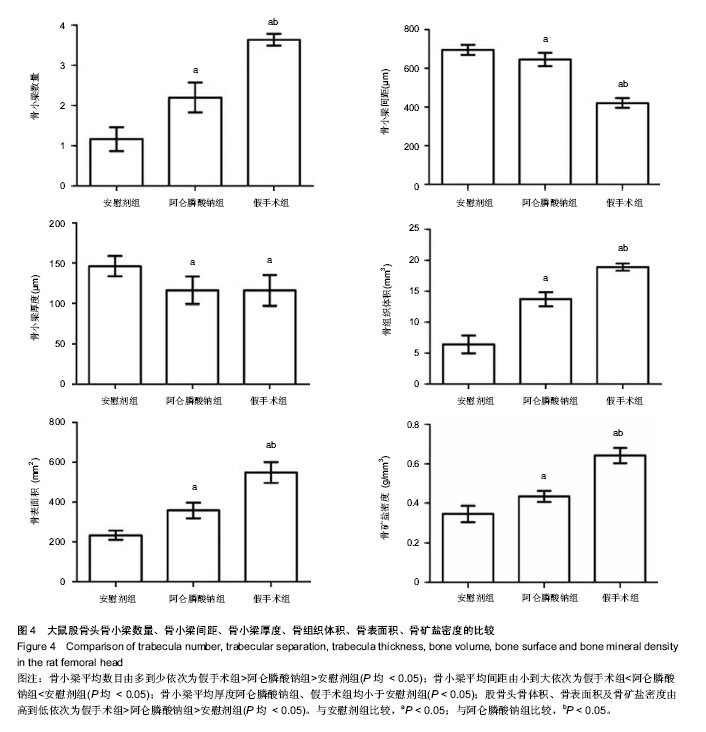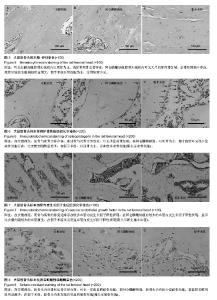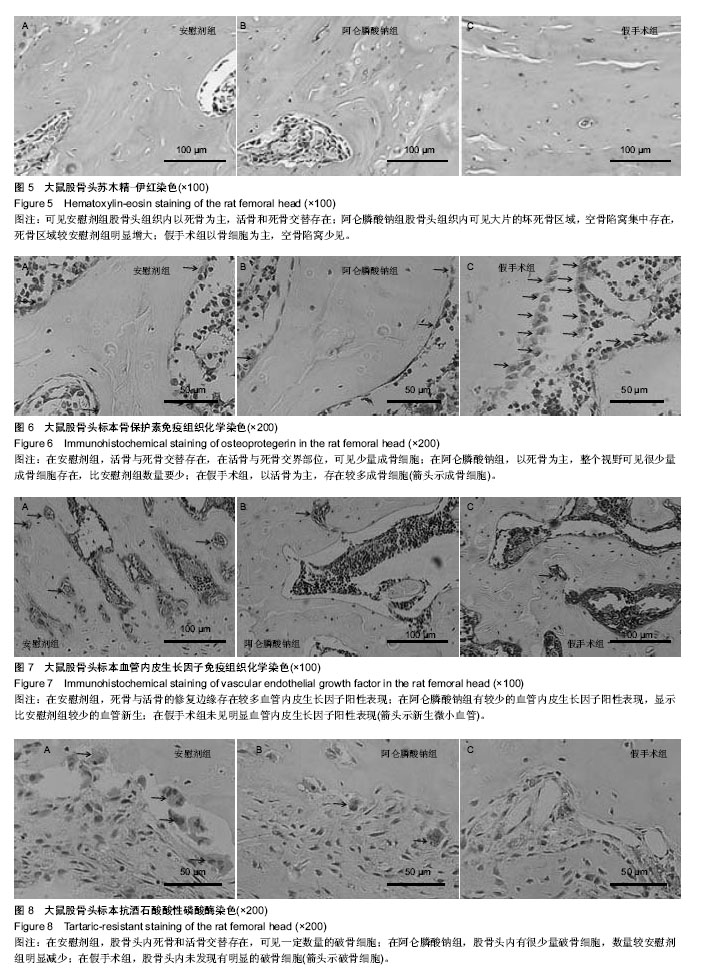| [1] Miyanishi K, Ymnanmto T, Irisa T, et al. Effects of different corticostemids on the development of osteonecrosis in rabbits. Rheumatology (Oxford). 2005;44(3):332-336.
[2] Gonzemlus MG, Brown TD, Zhang Y, et al. A new animalmodel of femoral head osteonecrosis: one that progresses to human-like mechanical failure.J Orthop Res. 2002;20(2):303-309.
[3] Taggart H, Bolognese MA, Lindsay R, et al. Upper gastrointestinal tract safety of risedronate:a pooled analysis of 9 clinical trials.Mayo Clin Proc.2002;77(3): 262-270.
[4] Nishii T, Sugano N, Miki H,et al.Does alendronate prevent collapse in osteonecrosis of the femoral head?. Clin Orthop Relat Res.2006;443:273-279.
[5] Lai KA, Shen WJ, Yang CY, et al. The use of alendronate to prevent early collapse of the femoral head in patients with nontraumatic osteonecrosis. A randomized clinical study. J Bone Joint Surg Am.2005;87(10):2155-2159.
[6] Peled E, Bejar J, Zinman C, et al. Prevention of distortion of vascular deprivation-induced osteonecrosis of the rat femoral head by treatment with alendronate. Arch Orthop Trauma Surg.2009;129(2):275-279.
[7] Peled E, Bejar J,Zinman C, et al.Alendronate preserves femoral head shape and height/length rations in an experimental rat model: A computer-assisted analysis. Indian J Orthop.2009;43(1):22-26.
[8] Pengde K, Fuxing P, Bin S, et al. Lovastatin inhibits adipogennesis and prevents osteonecrosis in steroid-treated rabbits. Joint Bone Spine.2008;6: 696-701.
[9] Terayama H, Ishikawa M, Yasunaga Y, et al.Prevention of osteonecrosis by intravenous administration of human peripheral blood- derived CD34- positive cells in a rat osteonecrosis Model. J Tissue Eng Regen Med.2011;5(1): 32-40.
[10] Li W, Sakai T, Nishii T, et al. Distribution of TRAP- positive cells and expression of HIF-1 alpha, VEGF,and FGF- 2 in the reparative reaction in patients with osteonecrosis of the femoral head. J Orthop Res.2009;27( 5):694-700.
[11] 范猛,姜文学,汪爱媛,等.唑来膦酸预防股骨头坏死塌陷的效果及机制[J].中国医学科学院学报,2012,34(4):330-336.
[12] Parks NL, Engh GA.The Ranawat Award. Histology of nine structural bone grafts used in total knee arthroplasty. Clin Orthop.1997;345:17-23.
[13] Barrier A, Lescaille G, Rigolet A, et al. Jaw osteonecrosis induced by oral biphosphonates:12 cases.Rev Stomatol Chir Maxillofac.2010;111(4):196-202.
[14] Maahs MP, Azambuja AA, Campos MM, et al. Association between bisphosphonates and jaw osteonecrosis: A study in Wistar rats.Head Neck.2011;33(2):199-207.
[15] Schneider JP. Bisphosphonates and low-impact femoral fractures: current evidence On alendronate-fracture risk. Geriatrics.2009;64(1):18-23. |
